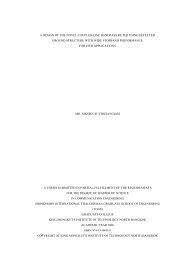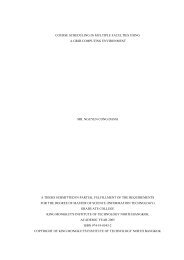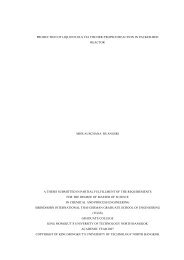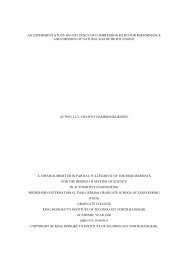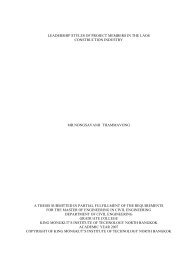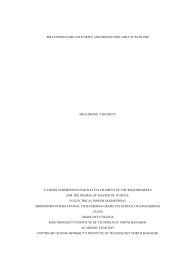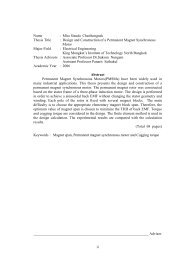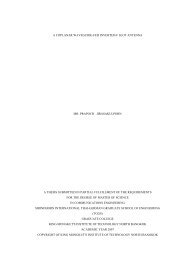analysis of water injection into high-temperature mixture of ...
analysis of water injection into high-temperature mixture of ...
analysis of water injection into high-temperature mixture of ...
Create successful ePaper yourself
Turn your PDF publications into a flip-book with our unique Google optimized e-Paper software.
58Performances parameters <strong>of</strong> different <strong>water</strong> <strong>injection</strong> duration angle, fromFigure 4-15 through Figure 4-20, which show that <strong>water</strong> <strong>injection</strong> duration angleincreased by 10-30 CAs. The indicated mean effective pressure (IMEP) and thermalefficiency ( η ) increased as the molar <strong>water</strong> <strong>injection</strong>-fuel ratio increased, the averageindicated mean effective pressure (IMEP) increased approximately 25,000-75,000 Paand the average increasing in thermal efficiency ( η ) is approximately 2-3 % in bothcases and only fluctuate slightly around this value and these curves seem to be almostthe same with each other at the same mass <strong>of</strong> <strong>water</strong> <strong>injection</strong>.For, the <strong>temperature</strong> <strong>of</strong> the two zone thermodynamics model <strong>of</strong> <strong>water</strong> <strong>injection</strong>mode per 1 CA, It is verified by the simulation that the molar <strong>water</strong> <strong>injection</strong>-fuelratio were increased 0.5-2.0. According to Figure 4-27 through Figure 4-38, it can beseen that the relative <strong>temperature</strong> change <strong>of</strong> burned gases and injected <strong>water</strong> whichcan be seen from the curves are almost the same for all cases. The relative<strong>temperature</strong> change <strong>of</strong> burned gases can be seen, from the figures that the <strong>temperature</strong>decrease as the molar <strong>water</strong> <strong>injection</strong>-fuel ratio increases gradually. The average<strong>temperature</strong> <strong>of</strong> burned gases decreased approximately 1-3 K per 1 CA. The relative<strong>temperature</strong> change <strong>of</strong> injected <strong>water</strong> can be seen from figures that as the <strong>temperature</strong>increase. The average <strong>temperature</strong> <strong>water</strong> injected increased approximately 300-700 Kper 1 CA.5.2 SuggestionsA mathematical model has been developed to simulate a four stroke cycle <strong>of</strong> aspark ignition engine using as gasoline fuel with <strong>water</strong> <strong>injection</strong> system. It is assumedthat the <strong>water</strong> is supplied to system from a perfect <strong>injection</strong> system <strong>into</strong> the pistoncylinder and completely mixing while the models are based on the thermodynamic<strong>analysis</strong> <strong>of</strong> the cylinder contents during the engine operating cycle. The programwritten from this simulation model can be used to assist the design <strong>of</strong> a spark ignitionengine for alternative fuels as well as to study many other fuels such as methane,methanol, nitro methane, benzene together with diesel which can be studied using thissimulation model.



